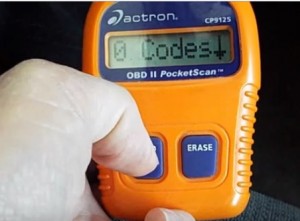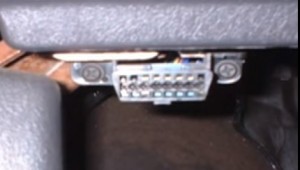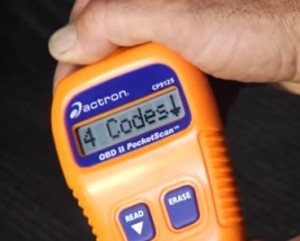
Using an OBDII scan tool is an easy task and is something almost anyone can do, making it perfect for the home do-it-yourself type of person.
The OBDII port on a car or truck is an easy way in modern times to help troubleshoot a problem any vehicle may have.
Using an OBDII scan tool allows a user to read codes that points to the problem a car or truck is having.
What is an OBDII Port?
The OBDII Port is a direct connection to a vehicle’s onboard computer.

OBDII ports became standard in the automotive industry in 1996 as a way for scanner tools to talk to a vehicle’s computer and show the errors it was getting.
Prior to 1996, as computer controls became common in vehicles, the ports would vary from car to car and have their own proprietary protocols.
OBDII protocols helped to create a standard used across all vehicle manufacturers.
For example, the same OBDII error code for basic engine problems will be the same on a Chevy as it is on a Ford or Volkswagen.
Many vehicles manufacturers will have extended codes that are car specific, but the basic engine error codes are the same across all vehicles.
What is an OBDII Scan Tool?
The computer used inside a car or truck regulates the engine and other parts but has no direct user interface.
An OBD-II Scan Tool is used to talk to a vehicles computer and display problems it is receiving from the engine or transmission.
The computer that controls an engine displays these problems with codes that are a combination of letters and numbers, such as P101.

An OBD-II scan tool can read these codes and display them to the user showing the problem with the vehicle.
Depending on your budget, there are many types of scan tools, from small cheap low-cost units to expensive high-end units.
The difference between the low-cost scan tools and expensive units are added features that make troubleshooting a vehicle easier.
For example, being able to read real-time information or clear codes are added features that may be desired.
How To Read an OBDII Scan Tool?
- Plug the scan tool into the vehicle’s OBDII port.
- Turn the Key to the on position.
- Turn on the Scan tool and select read errors.
It is quick and easy to use an OBDII scan tool by plugging it into a car or truck OBDII port and scanning for errors.
Once the scan tool displays an error, it can be looked up online or from a book.
The error code will point to is specific problem the vehicle is having.
For example, a P0171 code would be a “Bank 1 System Too Lean.” which is a gas air ratio problem usually caused by a bad oxygen sensor.
What is a Good Scan Tool for the Beginner?
Almost any low-cost OBDII scan tool is a good start for an inexperienced user in most cases.
Buying a low-cost unit is likely the best way to start since they will find most error codes and not break the bank.
For example, the Actron CP9125 is a low-cost unit that is a stand-alone tool that is well suited for a novice user.
There are also low-cost Bluetooth OBDII scan tools that work in combination with a smartphone or laptop and work very well.
Summary
Understanding how an OBDII port works in combination with a scan tool not only troubleshot a vehicle but has many other benefits.
Other benefits include an owner who simply wants to know why the dashboard light is on and become better informed before going to a mechanic.
A mechanic can use an OBDII tool to see what the problem is and fix it.